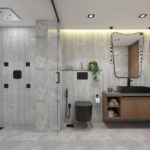Holograms have long been a symbol of futuristic technology, often seen in science fiction films as interactive 3D projections. Today, the idea of creating your own hologram display at home is not only possible but surprisingly accessible. With a few simple materials and a smartphone or tablet, you can craft a holographic illusion that adds a touch of magic to your living room, classroom, or personal projects. While these DIY displays are not true holograms in the scientific sense, they provide an impressive and entertaining visual experience that mimics 3D floating images. Here’s how to get started.
Understanding the Illusion
Before diving into the construction process, it’s helpful to understand how a basic hologram display works. The illusion is created using a method called Pepper’s Ghost, a technique dating back to the 19th century. This optical illusion reflects a 2D image onto a transparent surface at an angle, making it appear as though the image is floating in mid-air.
In the DIY version, you’ll be using a transparent material shaped into a pyramid or trapezoid that sits atop a screen. When a specially designed video plays beneath the transparent surface, the light reflects in such a way that the image appears to float inside the pyramid, viewable from different angles.
Gathering the Materials
Creating your own hologram display requires only a few easily accessible materials. The most common option for the transparent surface is a clear plastic sheet, such as the kind used in CD cases, overhead projector sheets, or even plastic packaging. You’ll also need a ruler, a cutting tool like a craft knife or scissors, tape or glue, and a pen for marking your cuts.
The choice of plastic is important—too thick and it becomes difficult to cut and reduces transparency; too thin and it may not hold its shape. Ideally, the plastic should be flexible enough to shape but firm enough to stand upright once assembled.
Building the Hologram Projector
To construct the hologram display, begin by measuring and cutting out four identical trapezoid shapes from your plastic sheet. A common size for smartphone displays is 6 cm for the bottom width, 1 cm for the top width, and 3.5 cm for the height. Once you have the four shapes, tape or glue them together along the edges to form a pyramid without a base.
Place this pyramid upside down on the center of your phone or tablet screen, aligning it with a specially formatted hologram video. These videos typically divide the screen into four mirrored images of the same subject, oriented to reflect on each face of the pyramid. You can find many of these pre-formatted videos online by searching for “hologram projector video” or “4-sided hologram video.”
Choosing the Right Content
The effectiveness of your DIY hologram display depends heavily on the quality and format of the content. Opt for videos that are designed specifically for hologram pyramids. These videos often feature floating objects like rotating planets, animated animals, or 3D text. The black background is essential, as it maximizes contrast and enhances the illusion of depth.
You can also create your own content using video editing software that allows mirroring and black backgrounds. This adds a creative dimension to your hologram display, enabling you to showcase personalized animations, messages, or educational content.
Enhancing the Experience
To improve the visual impact of your hologram, consider using your display in a dark room, where ambient light won’t interfere with the illusion. Make sure the screen brightness is turned up to make the projection more vivid. You can also experiment with larger versions using tablets or monitors, adjusting the size of your pyramid accordingly.
Adding a simple stand or frame can give your DIY hologram a more polished appearance. Some enthusiasts even design 3D-printed enclosures to house the projector, making it a permanent fixture on a desk or shelf.
Conclusion: Bringing the Future Home
Creating a DIY home hologram display is a fun and educational project that brings a taste of future tech into your everyday life. Whether you’re showcasing a science presentation, entertaining guests, or just enjoying the wonder of optical illusions, this simple yet fascinating setup proves that sometimes, the most impressive effects come from basic materials and a little creativity. With just a bit of effort, you can turn your smartphone into a miniature hologram theater and experience storytelling, animation, and visuals in a whole new dimension.
Get more details from these resources :
https://newsfuzhou.com/
https://perulive.net/
https://coloradonewstoday.com/
https://naturalimpactcbd.org/
https://cbdhempoilreviews.org/
https://firstpresbyterianastoria.org/
https://cnnnewstoday.com/
https://hempdispensaryhealth.com/
https://organicpurehempoil.com/
https://homewateralkali.com/
https://besharanews.com/
https://ausphreak.com/
https://relaxcbdhemp.com/
https://jungleboyweedtins.com/
https://testedhempoil.com/
https://ukbingopromotions.co.uk/
https://njknews.com/
https://hempdispensaryok.com/
https://ryehomedesign.com/
https://shaktihomestyle.com/
https://sonnah.org/
https://topeducationlounge.com/
https://ecofriendlyideas.net/
https://someinfinity.com/
https://dentalephesus.com/
https://morforyou.com/
https://mccallforall.com/
https://menshealthreview.org/
https://orangecountycahomeinfo.com/
https://nicejunehomewares.com/








